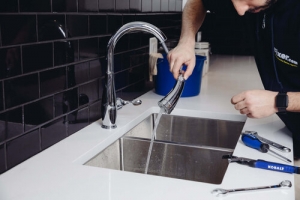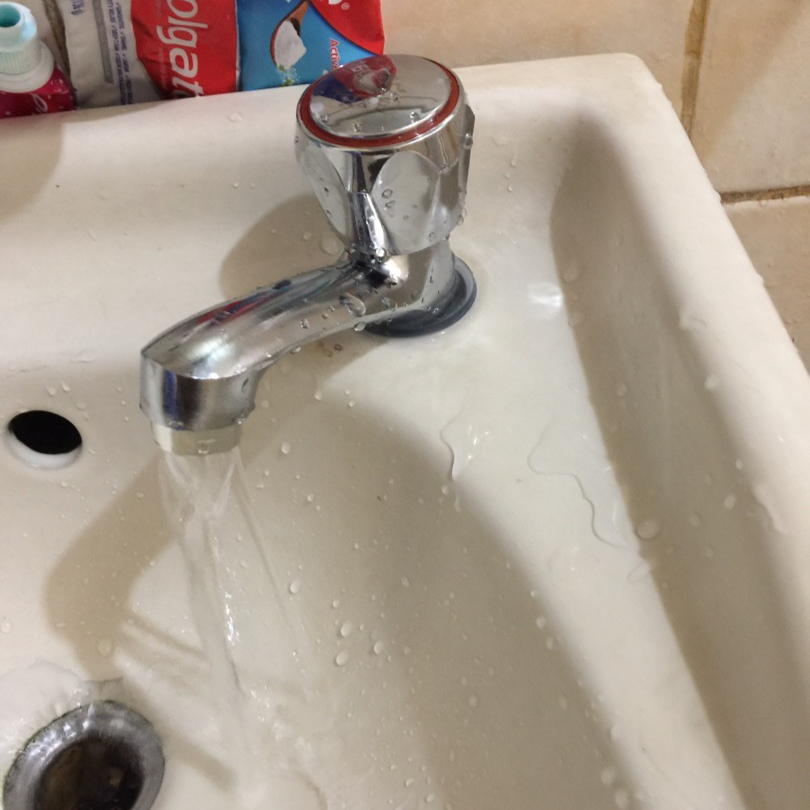What are your ideas regarding Should I Repair or Replace a Leaky Faucet??

Leaking taps could feel like a minor trouble, however their effect exceeds just the nuisance of the noise. From wasting water to incurring unnecessary financial prices and wellness dangers, ignoring a dripping tap can cause different consequences. In this article, we'll look into why it's vital to address this usual family issue without delay and successfully.
Wastefulness of Water
Environmental Impact
Trickling taps add substantially to water waste. According to the Environmental Protection Agency (EPA), a single tap leaking at one drip per second can waste greater than 3,000 gallons of water annually. This not only stress water resources yet likewise affects ecological communities and wild animals dependent on them.
Financial Expenses
Enhanced Water Costs
Past the ecological effect, leaking faucets can pump up water bills considerably. The accumulated wastefulness over time equates into higher energy expenses, which might have been avoided with timely fixings.
Potential Residential Property Damage
Furthermore, long term trickling can result in damage to components and surface areas bordering the faucet. Water accumulation can cause discoloration, corrosion, and even structural issues if left ignored, leading to extra repair work prices.
Health Worries
Mold And Mildew and Mildew Development
The constant presence of moisture from a dripping faucet creates an optimal atmosphere for mold and mildew growth. These fungis not just endanger interior air high quality but additionally posture wellness dangers, particularly for people with respiratory system conditions or allergic reactions.
Waterborne Illness
Stagnant water in trickling faucets can come to be a breeding place for bacteria and various other microorganisms, raising the danger of waterborne diseases. Pollutants such as Legionella bacteria prosper in stagnant water, potentially causing serious health problems when ingested or inhaled.
Do it yourself vs. Professional Repair service
Pros and Cons of Do It Yourself Fixing
While some may attempt to take care of a trickling faucet themselves, DIY repairs come with their own collection of obstacles. Without correct knowledge and tools, DIY attempts can worsen the problem or bring about insufficient fixings, lengthening the trouble.
Advantages of Working With a Specialist Plumber
Working with a specialist plumber makes certain that the underlying source of the trickling tap is dealt with efficiently. Plumbing technicians possess the competence and devices to diagnose and fix tap concerns effectively, saving time and decreasing the danger of further damages.
Step-by-Step Guide to Fixing a Dripping Tap
Tools Called for
Before trying to take care of a dripping tap, collect the necessary devices, consisting of a flexible wrench, screwdrivers, substitute parts (such as washers or cartridges), and plumber's tape.
Usual Faucet Issues and Their Solutions
Determine the kind of tap and the details problem triggering the drip. Usual issues include worn-out washing machines, rusty shutoff seats, or malfunctioning O-rings. Describe manufacturer directions or online tutorials for step-by-step support on fixings.
Preventive Measures
Normal Maintenance Tips
To prevent dripping taps, execute regular upkeep such as cleaning aerators, evaluating for leaks, and changing worn-out parts promptly. Furthermore, take into consideration installing water-saving gadgets or upgrading to more efficient components.
Relevance of Prompt Services
Resolving trickling taps as quickly as they're observed stops further water wastage and possible damage, ultimately conserving both water and money in the long run.
Influence On Residential Or Commercial Property Worth
Understanding of Well-Maintained Residential Or Commercial Property
Maintaining a residential or commercial property in good condition, consisting of dealing with upkeep problems like trickling faucets, improves its perceived worth and desirability among possible buyers or occupants.
Influence on Resale Worth
Characteristics with properly maintained plumbing fixtures, including faucets, command greater resale worths in the real estate market. Dealing with leaking taps can add to a positive impression during residential property evaluations and settlements.
Ecological Obligation
Private Payment to Preservation
Taking obligation for taking care of trickling taps lines up with wider efforts toward water conservation and environmental sustainability. Every individual's activities collectively make a considerable impact on maintaining priceless sources.
Lasting Living Practices
By prioritizing prompt repair work and embracing water-saving practices, individuals add to lasting living methods that benefit both existing and future generations.
Conclusion
Resolving a trickling tap surpasses plain convenience; it's an important step towards preserving water, lowering monetary costs, and safeguarding wellness and building. Whether with DIY fixings or expert assistance, doing something about it to repair trickling faucets is a tiny yet impactful means to promote liable stewardship of resources and add to a much healthier, much more lasting future.
Most Common Reasons for a Leaky Faucet and How to Stop the Drip
Whether it’s your kitchen faucet leaking or a bathroom faucet leaking, one leaky faucet can waste anywhere from three to 30 gallons of water every single day. If the constant drip-drip-drip doesn’t get your attention, your water bill will. The good news is that, by following a few simple steps, chances are pretty good you can fix the problem yourself.
Why is it dripping?
Before you start taking things apart, let’s break down some of the most common causes of a leaky faucet.
Bad O-ring.
A cartridge is a valve that controls the flow of water into the faucet spout. On cartridge faucets there’s an O-ring—the little disc attached to the stem screw that holds the faucet handle in place. If it’s loose or worn-out, it can cause your sink handle to leak. Of course, the cartridge itself could be worn out. If that’s the case, make sure you replace it with the exact same kind.
Corroded valve seat.
The valve seat connects the faucet and the spout. If the leak seems to be coming from the spout, it might be because a buildup of water sediment has corroded the valve seat.
Worn-out washers or seals.
A leaky spout could be caused by a bad washer that rests against the valve seat. It’s just a matter of time before friction takes its toll. It could also be the wrong size washer or one that’s been installed incorrectly. Water sediments can also corrode inlet and outlet seals.
Water pressure.
If the faucet only drips now and then, or when you turn the handles a certain way, you should probably check your home’s water pressure.
Loose or broken parts.
The adjusting ring and packing nuts in the stream screw can become loose over time, causing your sink handle to leak. Try tightening or replacing the packing nut. If the leak is coming from the pipes underneath the sink, you probably have a broken pipe or fitting. If that’s the case, you should definitely call a plumber.
Know your faucet.
Faucets come in a variety of types. Each one has its own assembly—and its own possible causes of leaks. Learning about the four most common kinds of faucets will help you know how to take them apart and make any repairs.
How to stop a leaky faucet
Fixing that leaky faucet doesn’t have to take a lot of time, money, or expertise. It’s usually a simple matter of replacing a worn-out washer or gasket, a loose O ring, or another part. Chances are really good you can do this yourself if you follow these simple steps.
Shut off the water.
Before you tackle the faucet, cut off the water supply to the sink. There should be one valve for hot and one for cold. Hand-turn them clockwise with your hands till they close. If there are no valves under the sink, head to the basement and shut off the main water supply to the house. Then turn on the faucet until it empties out the water that’s still in the line and you’re ready to start. It’s a good idea to cover the sink drain with a plug or a rag so you don’t lose any small pieces and parts while you’re working.

We were introduced to that editorial on Why Are My Faucets Dripping (And Can I Fix It Myself)? through an associate on another web address. I beg you take the time to share this content if you liked it. Thank you for your time. Kindly pay a visit to our blog back soon.